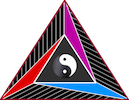
<< INDEX OF MINI-TESTS
Discover the fascinating world of Shinto Philosophy with our engaging quiz! Dive into the heart of Japan’s indigenous spiritual tradition, where nature and spirituality intertwine to form a unique worldview. Explore how Shinto beliefs influence cultural practices and personal motivations in Japanese society. This quiz will challenge your understanding of the core principles that define Shinto, from its reverence for kami to its emphasis on purity and harmony. Test your knowledge and see how well you grasp the essence of this ancient yet enduring philosophy. Remember to read the explanations provided at the bottom of the quiz to expand your knowledge.
Answer all the questions, choosing one answer for each.
1. In Shinto, what is a kami?
2. What is the role of Izanagi and Izanami in the Shinto religion?
3. One tenet of Shinto emphasizes which type of morality?
4. One recognizable symbol in Shinto is the Torii. What is a Torii?
5. Why are “Kojiki” and “Nihon Shoki” important texts in the Shinto faith?
6. Amaterasu is one of the most important deities in Shinto. Of what is she the goddess?
The correct answers are those that correspond to the letter C. Count the number of times you picked answer C and view your profile below.
0: Shinto is not your thing!
1-2: You are a quite misinformed Shinto
3-4: You are an evolving Shinto
5-6: You are a true expert on Shinto!
Explanation of answers
1. In Shinto, what is a kami?
Kami are spiritual beings or deities in Shinto belief. They can represent elements of nature, such as mountains, rivers, trees, and even certain human ancestors. Kami are considered to embody the essence of these natural phenomena and are revered in various rituals and ceremonies.
2. What is the role of Izanagi and Izanami in the Shinto religion?
Izanagi and Izanami are central figures in Shinto mythology as creators of the universe. According to mythological texts like the “Kojiki”, they were tasked with creating the islands of Japan and gave birth to many other kami. Their story explains much about life, death, and rebirth within Shinto beliefs.
3. One tenet of Shinto emphasizes which type of morality?
Individual morality over group morality is emphasized in some interpretations of Shinto practice. This reflects a focus on personal sincerity (makoto), purity (kegare), and harmony with nature rather than strict adherence to societal rules or dogma.
4. One recognizable symbol in Shinto is the Torii. What is a Torii?
A Torii is a traditional Japanese gate commonly found at the entrance to a Shinto shrine. It symbolizes the transition from the mundane world to a sacred space where kami reside. The structure typically consists of two vertical pillars topped by two horizontal crossbars.
5. Why are “Kojiki” and “Nihon Shoki” important texts in the Shinto faith?
The Kojiki (Records of Ancient Matters) and Nihon Shoki (Chronicles of Japan) are essential texts because they record myths about creation stories involving gods like Izanagi and Izanami, along with genealogies linking emperors directly back through divine ancestry—integral parts shaping both religious practices and national identity within Japan’s cultural heritage.
6. Amaterasu is one of the most important deities in Shinto. Of what is she the goddess?
Amaterasu, also known as Amaterasu-ōmikami, is revered as the goddess of the sun in Shinto belief. She plays a crucial role in Japanese mythology as an ancestor to Japan’s imperial family and symbolizes light, warmth, growth, and prosperity.
Disclaimer: Please acknowledge that this quiz, despite being developed by experts in the fields of spirituality and philosophy, is not intended to exhaustively probe your understanding of Shinto philosophy. Its primary purpose is to entertain and stimulate the user’s mind and curiosity. Therefore, remember to consider its results as purely indicative and use the explanations provided as food for thought rather than as judgments about yourself.
